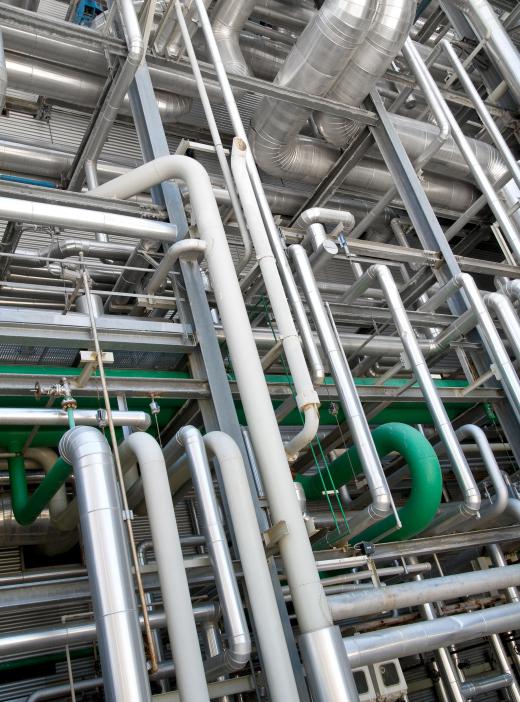What Is Design Pressure?
In pressure vessel terminology, the design pressure of a pipe, tank, reactor or other vessel is the pressure at which the unit is expected to run during normal operations. This includes excess pressure that may occur in normal operation; as a general rule of thumb, this excess pressure may range from 10 percent to 25 percent of the calculated pressure of the vessel. The design pressure is used to determine the characteristics of the pressure vessel and to gauge the vessel's capabilities.
A pressure vessel is a closed vessel, such as a chemical reactor or process tank, that is designed to hold gases or liquids at pressures above that of the atmosphere. Such vessels are commonly found in chemical and petroleum processing facilities. Heat exchangers, distillation columns, boilers, process tanks, pipes and reactors may be considered pressure vessels under the right circumstances.

The design pressure of a given unit operation is typically determined by calculation or process simulation. Design software is used to calculate the unit's operating pressure based on the material and energy inputs to the system. Once a converging model has been developed, the design pressure is calculated by taking the predicted pressure from the model and adding an estimated excess pressure. The excess pressure typically ranges from 10 percent to 25 percent of the predicted pressure and will depend on the design engineer's estimate of process stability.
Once the design pressure has been determined from a predictive model, the vessel can be fabricated. This pressure is used to determine the vessel's dimensions. Practical factors, such as the material of construction, and design safety factors often result in a fabricated vessel that can exceed the specifications of the design factor. Safety factors are used to ensure that pressure vessels can operate safely above their intended operational pressures for short periods of time.
The design pressure of a vessel is not to be confused with the maximum allowable working pressure (MAWP). The MAWP of a pressure vessel is calculated using the material of construction and the vessel dimensions and is a measure of the pressure the vessel can withstand before failing. The MAWP is used to determine the settings for pressure safety valves on the unit. Corrosion from chemical sources, mechanical wear and weather exposure can reduce the MAWP of a vessel over time.
Design pressure is a useful measurement for engineers and operators in regards to process safety. Knowing the average operating pressure for a unit operation may be necessary for choosing the appropriate equipment to catch process samples. The design pressure of a vessel also may be used to estimate process conditions, although direct measurements are usually more accurate.
AS FEATURED ON:
AS FEATURED ON:











Discuss this Article
Post your comments